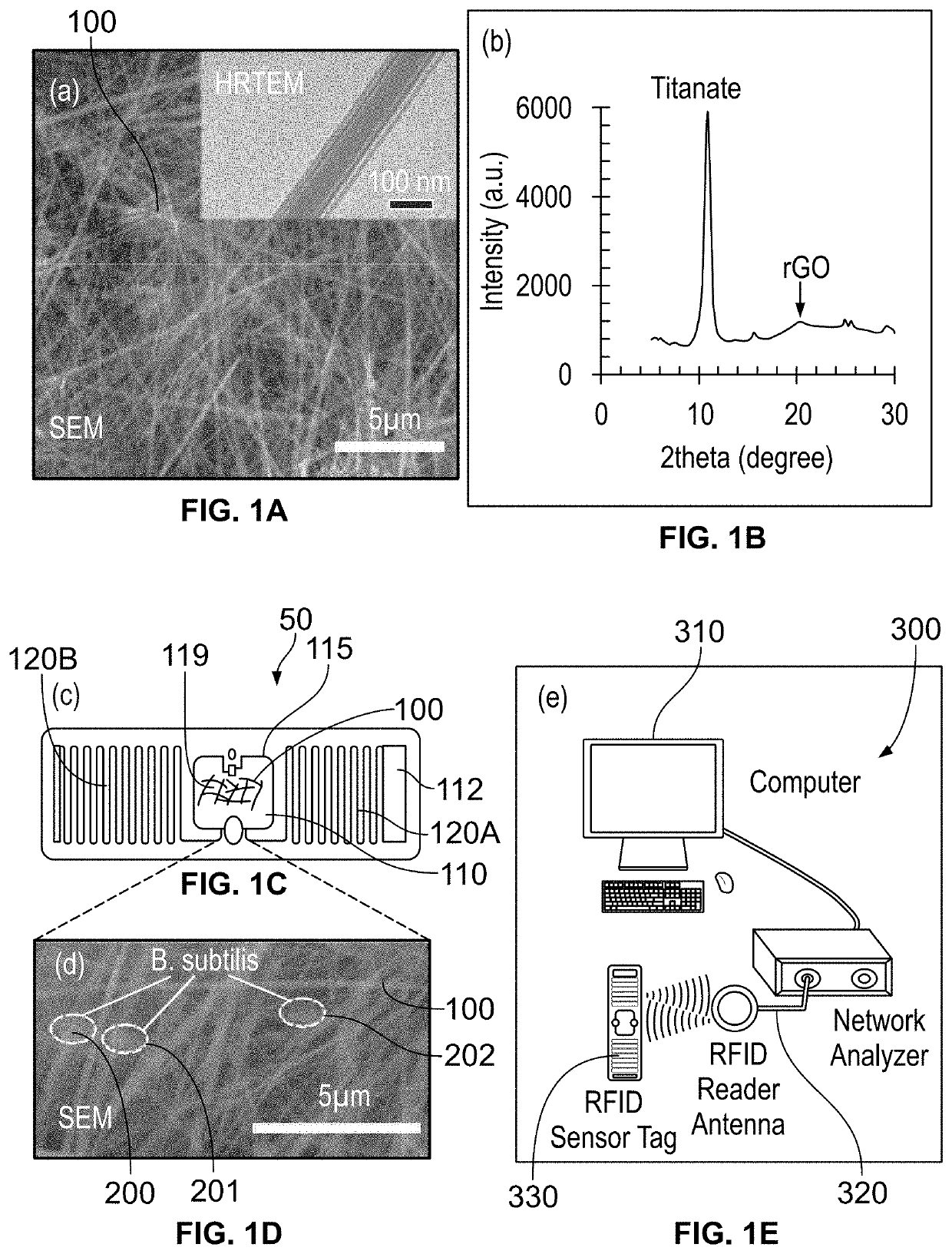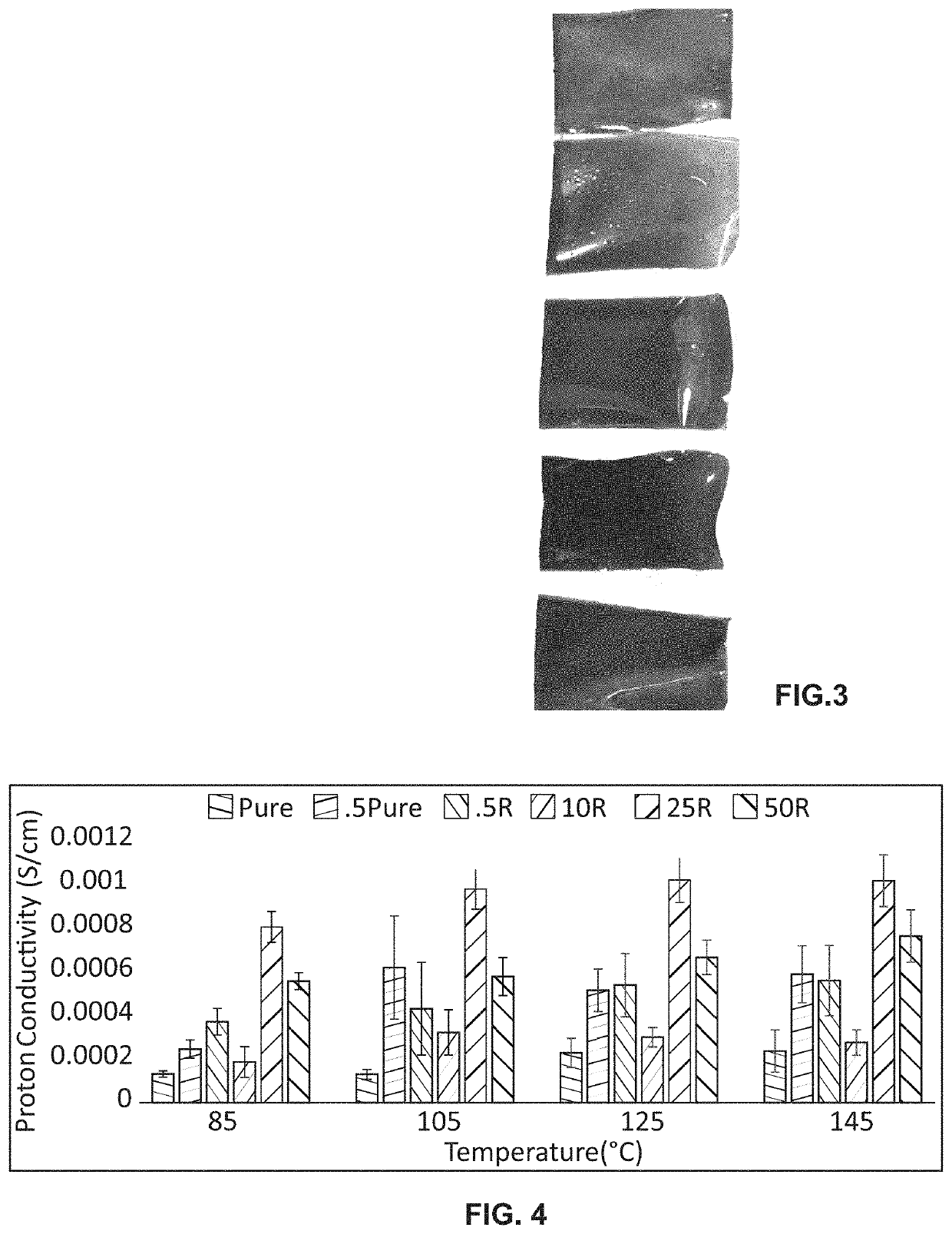New Core/Shell Materials of Nanowire/Graphene on Low-Cost RFID Tags for Rapidly Sensing Live Cell Metabolites at Single-Cell Sensitivity
a technology of nanowires and graphenes, which is applied in the direction of biological material analysis, instruments, measurement devices, etc., can solve the problems of limiting the applicability of phosphoric acid electrolyte, requiring extensive water management and lower operating temperatures, and corroding phosphoric acid electrolyte and its impact on the durability and lifetime of the pbi membran
- Summary
- Abstract
- Description
- Claims
- Application Information
AI Technical Summary
Benefits of technology
Problems solved by technology
Method used
Image
Examples
Embodiment Construction
[0029]Detailed embodiments of the present invention are disclosed herein; however, it is to be understood that the disclosed embodiments are merely exemplary of the invention, which may be embodied in various forms. Therefore, specific structural and functional details disclosed herein are not to be interpreted as limiting, but merely as a representative basis for teaching one skilled in the art to variously employ the present invention in virtually any appropriately detailed method, structure, or system. Further, the terms and phrases used herein are not intended to be limiting, but rather to provide an understandable description of the invention.
[0030]In certain embodiments, the present invention provides a biosensor comprising a titanate / rGO core / shell nanowires and radiofrequency technique for real-time detection of bacterial metabolic products using RFID tags with three types of bacteria: E. coli MG1655, Salmonella LT2, and Bacillus subtilis.
PUM
| Property | Measurement | Unit |
|---|---|---|
| frequency | aaaaa | aaaaa |
| temperature | aaaaa | aaaaa |
| flow rate | aaaaa | aaaaa |
Abstract
Description
Claims
Application Information
 Login to View More
Login to View More - R&D
- Intellectual Property
- Life Sciences
- Materials
- Tech Scout
- Unparalleled Data Quality
- Higher Quality Content
- 60% Fewer Hallucinations
Browse by: Latest US Patents, China's latest patents, Technical Efficacy Thesaurus, Application Domain, Technology Topic, Popular Technical Reports.
© 2025 PatSnap. All rights reserved.Legal|Privacy policy|Modern Slavery Act Transparency Statement|Sitemap|About US| Contact US: help@patsnap.com



